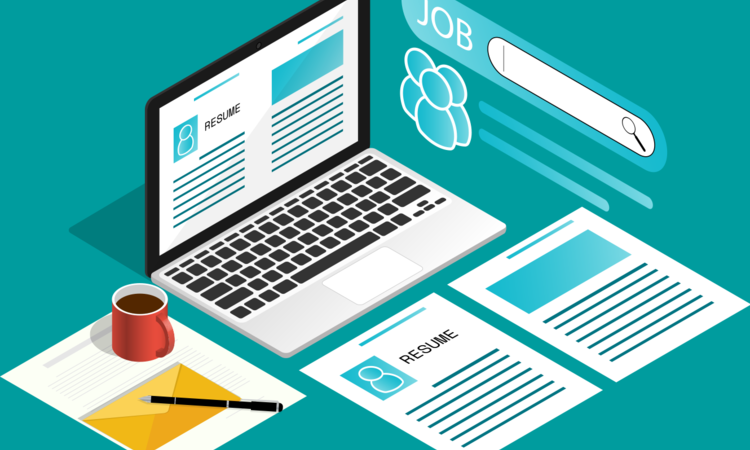
Over the past 20 years, the purpose of a resume has changed considerably. Long gone are the days when you would go in and ask to speak to a manager or drop a hard copy resume on a recruiter’s desk in a plastic sleeve, on bright glossy coloured paper and a picture to stand out. Nowadays, you apply online with all the other hundreds (or thousands) of applicants, which can be unfavourable for some, or favourable if you follow our tips below.
At present, most recruitment agencies use an applicant tracking system (ATS) - software that helps them organise job applications and ensure no body falls through the cracks. However, there are also agencies who use software programs where AI (artificial intelligence) search for key words and skills and do the pre-screening for them. So, in essence, the colour and size of your resume does not matter, but keeping your resume format simple, straight forward and using the right key words is what’s going to get your resume noticed by a recruiter.
At our agency, we do use an ATS software system, however we also still believe that people will spot and feel more things in a CV than AI, so all of our recruiters still read all resumes received to maintain that human touch. To really catch a recruiter’s eye, your resume needs to grab a recruiter’s attention nearly instantly. Like a newspaper story, no matter how good the content, the first 10% of the story is where impressions start. So, how does one do such a thing? Here are a few ways to make your resume instantly eye-catching. (And it’s not with colourful graphics or professional headshots.)
1. Use the Good Old Resume Format
A common mistake people make in an effort to make their resumes a bit more flashy is to get creative with the formatting. And while this is sometimes okay in more arts-centric professions, in general you really don’t want to mix up the standard resume formatting too much, because it makes it harder for recruiters to find what they’re looking for (not to mention it wreaks havoc with CRM systems).
It’s helpful to remember that recruiters don’t forward a resume because it’s pretty—they send resumes along when they see a candidate is qualified. So, make sure your skills are seen, not tucked away somewhere unexpected.
Keep your name and contact information at the top, make your section headings stand out through bolding, underlining, or all-caps text, and have your achievements written out as bulleted statements. It’s all about making it easy to find the right information to convince them to move you on in the recruiting process—not to win a graphic design contest. (Unless, well, you’re going for a graphic design job).
2. Make the Best Stuff Loud and Clear
While you don’t want to shake up the formatting too much, you do want to make sure your most relevant experiences are as close to the top as possible. With only a blink, you know the recruiter is looking at the very top of your resume—not halfway down the page, and definitely not somewhere near the bottom.
What does this mean? Think about what’s most important in getting you hired for each specific position you’re applying for and rearrange your resume accordingly. If you’re straight out of university and interested in an ASM or management position, put your education section up top, and make sure your degree is front and centre. If you’re an experienced Retail Manager, you’ll want to have relevant skills up at the top of your resume in a summary of qualifications section. And, if your most recent experience isn’t the most relevant to the job you’re seeking, then it’s time to create a tailored experience section, like “Business Development Experience” or “Team Leader Experience,” that goes above the rest of your positions. The key here, again, is to make sure whoever’s reading your resume gets the message about what you have to offer—instantly.
3. Use Emphasis Strategically
Aside from making sure everything is where it’s expected and moving your strengths to the top, you also want to be thoughtful about what else is highlighted throughout your resume. In other words, think about what you want to showcase, then use bolding, underlining, and italicising to emphasise those things.
For example, if you have an internship at a well-known company like Woolworths, Amazon or Gucci, you’ll probably want to point to the company name rather than your position title. Alternatively, if you wore multiple hats as one of the first employees of a small start-up, you may want to put greater emphasis on your job title than on the name of the company. Since your resume only gets a quick glance, it’s likely that whatever is bolded is going to be what’s looked at. Make sure it makes an impact.
Times have changed and it’s important we realise that the purpose of a resume has changed as well.
It’s important to remember, that when you send out your resume, it’s not just about making it easy for a recruiter to read and making your best stuff stand out, but it’s also how an ATS system picks up this information as well. If you’re not successful for the job you’re applying for you’ll be depending on how the ATS system has coded your resume to make sure it comes to the consultants attention next time. And you can learn more about that in part 2 of this blog, coming soon!

